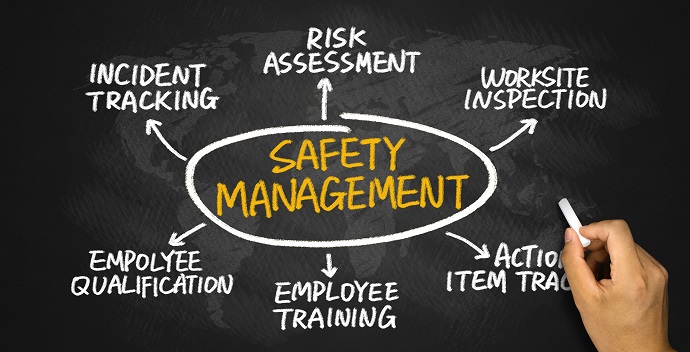Sofema Aviation Services (SAS) reviews how to implement Safety Management System within an EASA Part 145 Organisation.
Implementing Safety Management Systems in aviation – Introduction
SMS is required within all Aircraft Maintenance Organisations In accordance with the requirements of ICAO Annex 19.
EASA has issued a Notice of Proposed Amendment (NPA) 2019-05 (C) and currently, the European Aviation Industry is awaiting the issue of the opinion which will be the source of the update of the implementing rule and decision which will provide the necessary Acceptable Means of Compliance (AMC) and Guidance Material.
It is expected that as per the standard regulatory implementation process a 24 months transition will be announced leading to the incorporation of SMS within an EASA Part 145 Organisation.
So there is Time? – Yes! – However – please consider the following:
Are we implementing an SMS within an EASA Part 145 Organisation because we have to or because we want to?
What’s the difference?
Well, the reality is that organisations who fully engage with SMS including the development of a Safety Culture as well as optimised business processes and practices can not only ensure strong engagement with a culture of safety but can improve the “bottom line”.
Provision of SMS Training – Including Human Factors – What will be required?
With respect to the understanding of the application of safety management, human factors, and human performance issues, all maintenance organisation personnel should have received an initial and recurrent continuation of human factors safety training, appropriate for their responsibilities.
This (SMS plus HF Training) should concern include to a minimum at least the following staff members:
- Post-holders Nominated persons, line managers, supervisors;
- Certifying staff, support staff, and mechanics;
- Technical support personnel such as planners, engineers, technical record staff;
- Quality control/assurance staff;
- Persons involved in any compliance monitoring and/or safety management-related processes and tasks, including the application of human factors principles, internal investigations and safety training;
- Specialised services staff;
- Stores department staff, purchasing department staff;
- Ground equipment operators.
EASA Safety Training Considerations?
Safety training refers to dedicated training to support safety management policies and processes, including human factors training.
Note: the main purpose of the safety training programme is to ensure that personnel at all levels of the organisation maintain their competency to fulfill their safety roles.
Safety training should, in particular, consider the safety knowledge derived from hazard identification and risk management processes, and support the fostering of a positive safety culture.
Note: safety management training means specific training for the staff involved in safety management functions in accordance with point 145.A.30(ca) or 145.A.200(a)(3).
AMC2 145.A.30(e) Personnel requirements.
Considering AMC1 145.A.30(c);(ca) Personnel requirements.
- Considering changes to the Human Factors Training which will now be called Initial Human Factors Safety Training.
Note: For clarity shown are only the differences from the existing EASA Part 145 HF Training Course.
GM1 145.A.30(e) Personnel requirements (Forthcoming)
General/Introduction to safety management and human factors
Need to address safety management and human factors
1a. Safety risk management
1a.1. Hazard identification
1a.2. Safety risk assessment
1a.3. Risk mitigation and management
1a.4. Effectiveness of safety risk management
Safety Culture/Organisational factors
2.1 Just culture
2.2 Reporting culture
2.3 Informed culture
2.4 Flexible culture/learning culture
4.12. Fatigue and fatigue risk management
5.11. Other hazards in the workplace
9.2. Avoiding Error-provoking behaviour
10. Organisation’s HF safety programme
10.1. Safety policy and objectives, just culture principles
10.1.2 Reporting errors and hazards, internal safety reporting scheme
10.3. Error Occurrence investigation process
10.5. Feedback and safety promotion
Who can perform Safety Manager Duties?
If the same person is designated to manage both the compliance monitoring function and safety management-related processes and tasks, the accountable manager, with regard to his or her direct accountability for safety, should ensure that sufficient resources are allocated to both functions, taking into account the size of the organisation, and the nature and complexity of its activities.
Subject to a risk assessment and agreement by the competent authority, with due regard to the size of the organisation and the nature and complexity of its activities, the compliance monitoring manager role and/or safety manager role may be exercised by the accountable manager, provided that he or she has demonstrated the related competency.
Next Steps
Follow this link to our Library to find & Download related documents for Free.
Note – Sofema Aviation Services offers the following training integrating both Human Factor and Safety Management System Elements fully compliant with EASA GM2 145.A.30 (e) HF & SMS Training Requirements:
For additional questions or to register please email team@sassofia.com
Tags:
Aviation Safety Management, ICAO Annex 19, Acceptable means of compliance (AMC), Safety promotion, Error Occurrence investigation, Stores department, Fatigue Risk Management, Certifying Staff, SAS training, SAS blogs, EASA Part 145, Aviation SMS, Online Training, Quality Control, Hazard Identification, SMS training, Safety Risk Management, Safety Management systems, Risk Management, Human Factor Training




